Green Parakeets at their roost wire
We drove past the birds to get the morning light at our backs and only spent a few minutes enjoying their show before something spooked the flock. A SWAINSON’S HAWK was flying in the area and that seemed to be the likely culprit. In any event, the birds were mostly gone in less than 10 minutes, and so were we.
Before the remainder of our morning birding commenced there was one important stop to make. I had been told about a local donut shop that we had to try--so Shipley Do-Nuts was a must.
THE Shipley Do-nuts to visit!
We pulled into what looked like a relic of the 50’s--as we found out this was the original Shipley’s, and based on our experience and what I’ve been told by others--this is the one to visit. The manager was super friendly and after talking for a few minutes he told us that his son went to school in Utah, and he enjoyed visiting our part of the country. The feeling was mutual. With ½ a dozen donuts in hand each--we headed back to Santa Ana for round 2--and high hopes of a rare kite on the morning hawk watch from the tower.
Best donuts I've ever eaten
If you had told me the biggest checklist I had ever submitted in the ABA was going to be on April 14th, 2017 at Santa Ana NWR, I wouldn’t have probably thought too much about it. I knew that mid-April produced big day lists from the park and that 80-90 species would be likely if we spent most of the morning here--as we planned. But numbers really didn’t matter we were focused on birds, and so we set out with high hopes of finding some good species. Our first stop was to be the tower--where we planned on spending at least an hour--or maybe 2 in hopes of catching a HOOK-BILLED KITE lifting off and gliding over the trees. This highly sought after species had been seen somewhat regularly over the past couple weeks and we wanted some of that kite action.
The morning on the tower was productive, with HARRIS’S, BROAD-WINGED, SWAINSON’S, COOPER’S, and SHARP-SHINNED HAWKS making passes. Numbers were low as it was early, but it was our best chance at the kite early in the day. We were getting close to giving up when a young birder pointed towards Mexico, and said, "I think I’ve got the kite". Sure enough, low over the trees, the HOOK-BILLED KITE was gliding. The whole thing lasted maybe 15 seconds, and the bird dropped back into the canopy--gone for the day. It wasn’t nearly as satisfying of a look as I had hoped. But it was a new ABA bird for me, so I can’t complain.
The brief glimpse at a Hook-billed Kite
Aside from the kite, the tower was fun as a lot of birds were very active in the treetops during the first couple hours. We had killer looks at PLAIN CHACHALACAS that were calling up a storm from dead snags high above the ground. There were several COUCH’S KINGBIRDS singing and a LONG-BILLED THRASHER that put on an epic solo for quite some time. Our lone ANHINGA of the trip was a flyover from the tower, and there was the constant call of a NORTHERN BEARDLESS TYRANNULET below. It was a fun experience.
The lone Anhinga of the trip
We descended and set out to look for songbirds. Warblers were scarce but we tracked down 5 species including NORTHERN WATERTHRUSH, KENTUCKY WARBLER, COMMON YELLOWTHROAT, BLACK-AND-WHITE-WARBLER, and NORTHERN PARULA. Along with the expected SUMMER TANAGERS, we had a WESTERN TANAGER and a ROSE-BREASTED GROSBEAK. We tracked down ALTAMIRA, BALTIMORE, and BULLOCK'S ORIOLE. And a single DICKCISSEL was a welcome find. And a Gulf Coast Ribbon Snake was a new reptile with a striking pattern.
Gulf Coast Ribbon Snake taking a swim
We scored killer looks at a RINGED KINGFISHER as well as a cooperative group of LEAST GREBES. Both new for everyone's ABA list. On one pond after we found a handful of BLACK-BELLIED WHISTLING-DUCKS, we picked out several FULVOUS WHISTLING-DUCKS. This was a long sought-after life bird for me--I was stoked to have finally seen it.
Least Grebe was the last breeding grebe I needed in the states
We did a loop out through the Pintail Ponds to check for shorebirds and had a few sandpipers, dowitchers, yellowlegs, and stilts. Kenny pointed out a bird singing from the thicket along the trail--it was a CLAY-COLORED THRUSH. At the time I didn’t know, but this was my 600th ABA species! I took a recording since I couldn’t see the bird--it wouldn’t matter as we got good looks at one a little later near the visitor center.
Obscured photo of a Clay-colored Thrush
We also picked up some good wading birds here including TRICOLORED HERON, LITTLE BLUE HERON, ROSEATE SPOONBILL, and WHITE IBIS. The birding was simply phenomenal. At every turn, there were new birds and we were having a good time. We planned on spending the whole morning here, and it was already well after noon.
Photogenic Black-bellied Whistling-Ducks
Deciding that we needed to move on to other targets we decided to head back--only to have the skies open up and start dumping on us. Pretty soon the trail turned to a sticky muddy mess and people were losing shoes, flip-flops were breaking, and it was a slow walk back to the HQ. Eventually there we cleaned off the mud and headed to the parking lot. As we tallied up our birds the list crept up and up all the way to 99 species. Holy crap--that was a big morning, but we were 1 short of an awesome even 100. As we pulled out onto the road towards the highway we spotted a raptor out over some nearby fields--it was a CRESTED CARACARA, the 100th species for our morning refuge list.
Trio of White Ibis right next to the road
As of the writing of this post, the Santa Ana hotspot sits at 342 species. In one morning we saw roughly 30% of those birds. In the time since the trip, Santa Ana has sat at the center of controversy due to the dolt in chief deciding a border wall needs to cut the refuge essentially in half. What a stupid plan that won’t fix our illegal immigration plan--but will make a handful of American racists happy. We as humans are so short-sighted and selfish in our beliefs. Places like Santa Ana and the wildlife it protects will bear the brunt of our stupidity. And as an American, if you support Trump and these policies, you can't call yourself a birder, or care about wild things--the two just don't go hand in hand.
#endRant
Okay back to birds. In the heat of the Texas sun, we made our way to the Progresso Sod Farm in the middle of nowhere. After debating the best way to bird the farm, we opted to drive up the main road. There was no office, no “no trespassing” signs, and a road without a gate. We figured it was okay and we didn’t run into anyone while we were there. So you might be asking, why go to a sod farm in Texas in April, with all those awesome border hot spots to look for birds? Well, sod farms are notoriously wet--and provide habitat for a number of migrant shorebirds, and songbirds that you won’t really find in other South Texas habitats. First and foremost on that list is the BUFF-BREASTED SANDPIPER, which we picked out in the distance. More expected an more common were several UPLAND SANDPIPER, as well as AMERICAN GOLDEN-PLOVER, and several PECTORAL SANDPIPER.
Upland Sandpiper on the sod
The actual highlight though wasn’t the shorebirds--instead, it was a tiny, non-descript songbird that shows up here during migration, before heading to the prairies of the upper midwest. As we drove up the road we flushed a pipit and with windows down we freaked out as it clearly sang out the SPRAGUE’S PIPIT song! We jumped out of the vehicle and eventually found where the bird landed in the fields. We watched it through scopes as it meandered through the grass. Too far for great photos, but close enough that we enjoyed a great new trip bird.
Phone scoped Sprague's Pipit
After running up the middle of the farm we also traversed the west edge--getting much closer to some of the shorebirds. Unfortunately, we couldn’t relocate the Buff-breasted Sandpiper for closer looks, and on a schedule, we decided to head out to make sure we fit in the rest of our afternoon stops. We made our way to the Frontera Audubon Center which was actually quite a letdown. Although this Texas Spotted Whiptail was certainly a cool lizard to see.
The impressively colorful Texas Spotted Whiptail
I got good shots of WHITE-TIPPED DOVE here, and a super cooperative YELLOW-CROWNED NIGHT-HERON--but other than that it was slow in the muggy afternoon air.
White-tipped Dove at a Frontera feeding station
We figured we could fit in one more afternoon stop before making it to Brownsville for the evening parrot show at Oliveira Park. Having thoroughly cleaned up on target species the past day and a half we decided to try our luck at an out of the way marsh called Tiocano Lake, where King Rail had been sighted in the past week. Unlike the other locations we’d been most of the past two days, there was no one at Tiocano. It only took a couple of minutes before we heard a KING RAIL, and then another--and another. 3 King Rails! Pretty soon we tracked one down and were able to get photos and recordings as it went nuts just 30’ from the road.
King Rail peeking out from the rushes
We also scored a handful of waterfowl and waders here, including great looks at ROSEATE SPOONBILL. This out of the way and unassuming lake turned out to be a fruitful stop adding 3 species we wouldn’t otherwise get during our visit, and eating up some time that we didn’t really have a great plan for. Initially we thought about visiting Sabal Palm before dark but based on checklists at the time, it looks like we made the right choice.
Very colorful Roseate Spoonbill
With afternoon giving away to evening we sped off for Brownsville. It was about an hour drive to where we were going, and we wanted to give ourselves plenty of time for the parrot show. Oliveira Park has been on the radar for a while now for a large flock of mostly RED-CROWNED PARROT that roosts here most nights. Along with the Red-crowned a handful of other species are often reported including: RED-LORED, YELLOW-HEADED, WHITE_FRONTED, and LILAC-CROWNED PARROTS--and GREEN PARAKEET. And during most of the year, whether 30 parrots a night or 200, there is almost always activity, providing quite the experience for visitors.
Now, technically speaking most of these birds aren’t countable by ABA standards. What is wild, what is escaped, what is introduced, and what is established? The Red-crowned seems pretty darned established, and I believe is the sole countable species, aside from the parakeet. But for non-serious listers like myself, a bird is a bird is a bird. And these parrots represent something worth seeing--and my cohorts agreed. So off to Oliveira we went. We arrived well before sunset. Most checklists seemed to start between 6:30 and 7:00 PM, meaning we had some time to look for other birds.
Still feeling the effects of the 40 hour day I hung out at the vehicle why the rest of the group headed off to see if they could find any migrants. They, in turn, found a WORM-EATING WARBLER while I enjoyed a cooing INCA DOVE. Sometime after 6:30 we had our first flyover of parrots in the distance calling--it was a small flock of GREEN PARAKEET. The was old news after our morning in McAllen. The next parrots to make a pass were several RED-CROWNED PARROT, a species that shortly would fill the skies. The first ones landed in a nearby tree, and then the cacophony started to rise from the southeast--and then the lines of parrots appeared in the sky. The spectacle had started.
The most abundant species--the Red-crowned Parrot
In waves the birds flew over, circling, and chattering as they looked for places to land. Some ended up in trees, others on fences, and others on power lines. Others just kept on flying. This continued for some time as we started to focus in on the birds to pick out the oddballs. The first ones we spotted were several YELLOW-HEADED PARROTS that perched in the fading sunlight providing excellent looks.
Yellow-headed Parrot in the last of the days light
Pretty soon we had picked out RED-LORED PARROTS--smaller and with a more soft shaped head. We picked out 7 of these parrots, which made up the 2nd most common species in the group.
Red-lored Parrots were easily picked out from their bigger cousins
We finally picked out several LILAC-CROWNED PARROTS and a single WHITE-FRONTED PARROT as it was getting dark.
Flyover Lilac-crowned Parrot
We kept watching as flocks came and went long after we could identify anything by sight. It was a thrilling ending to a fantastic day of birding that added 57 species to my Texas life list and 14 new ABA birds. By the end of day 2, we had surpassed 160 species and the ½ way mark on our whirlwind tour of South Texas.
Checklists from today:
McAllen Green Parakeet Roost
Santa Ana NWR
Progresso Sod Farm
Frontera Audubon
Tiocano Lake
Oliveira Park
Photos from today:
McAllen Green Parakeets
Santa Ana NWR
Progresso, Frontera, & Tiocano
Brownsville Parrots
Other Posts in this series:
Texas Part 1: Salineño and Bentsen State Park
>> Texas Part 2: Santa Ana NWR and Brownsville
Texas Part 3: South Padre Island and Laguna Atascosa (coming soon)
Texas Part 4: King Ranch and Hill Country (coming soon)
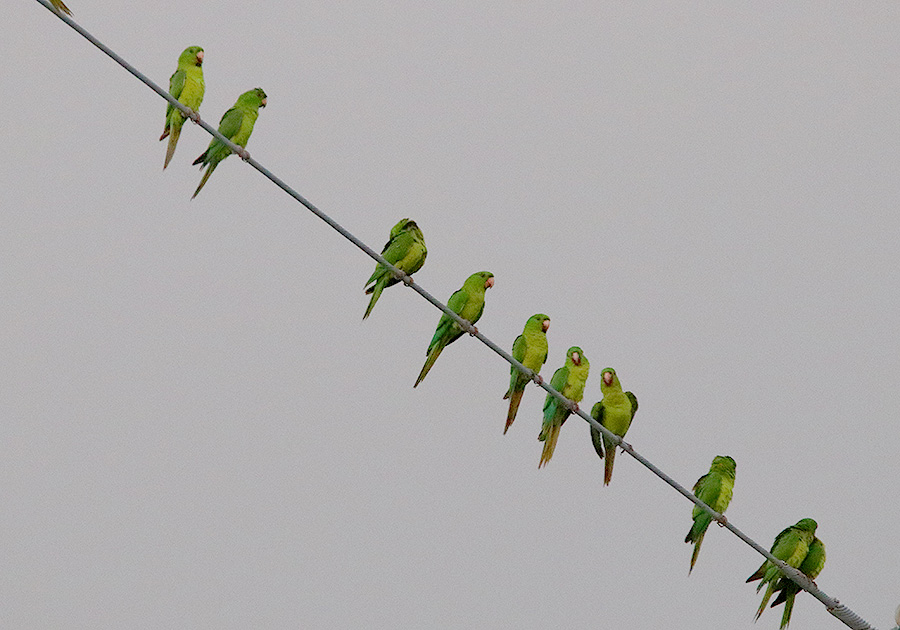
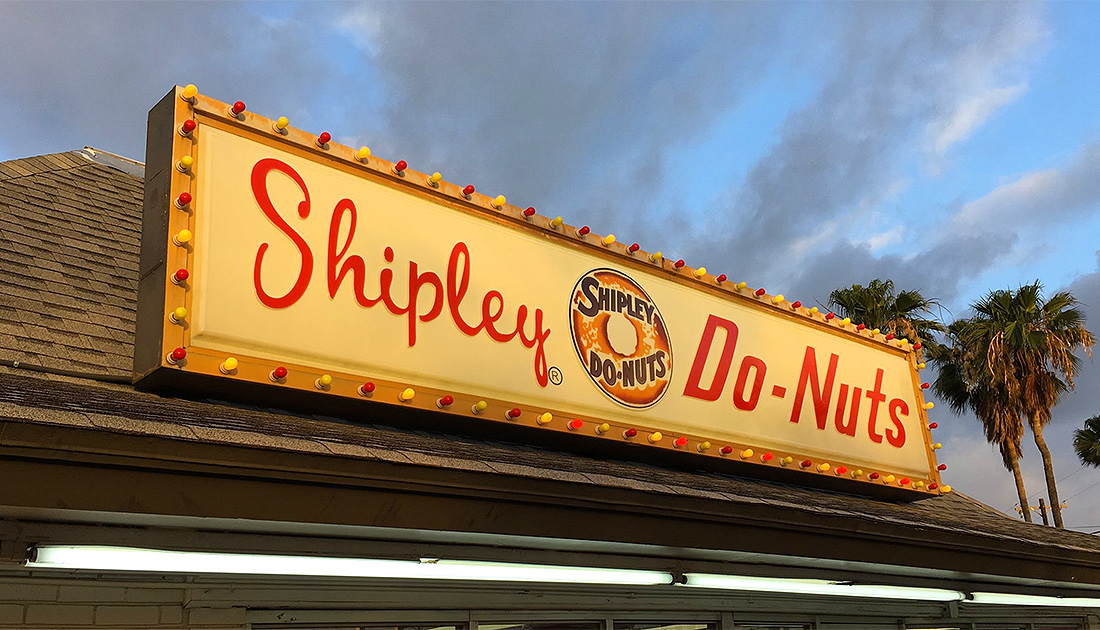

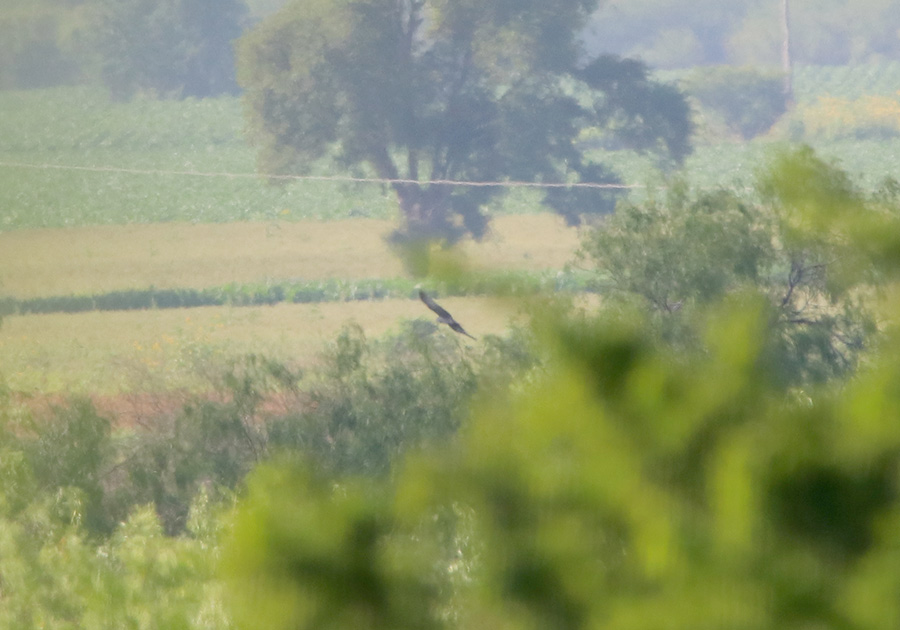
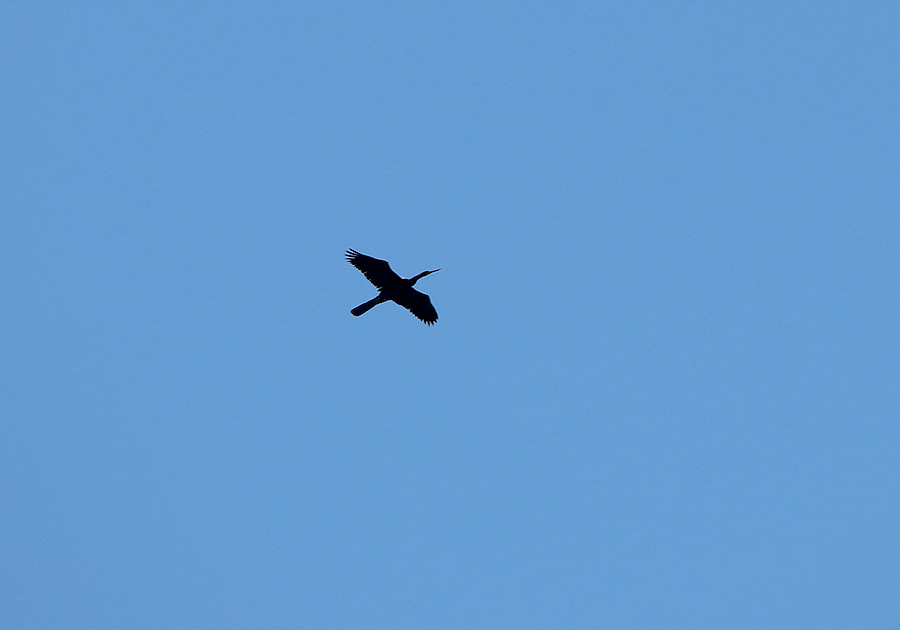
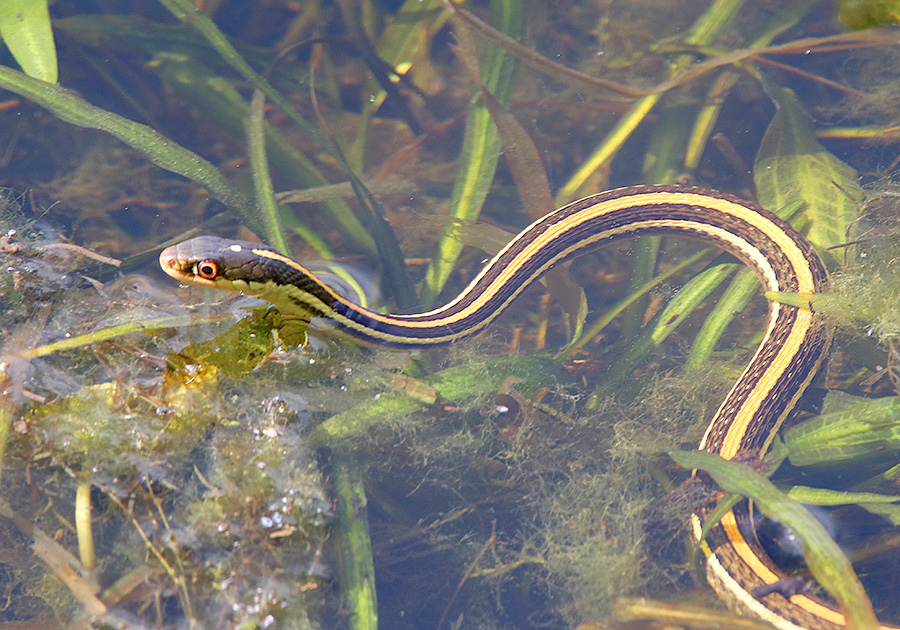
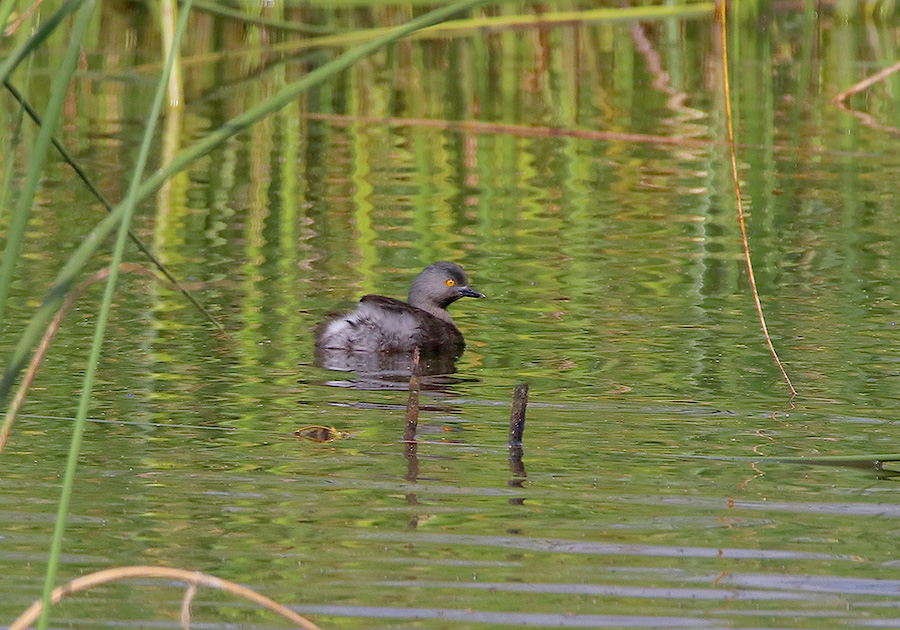
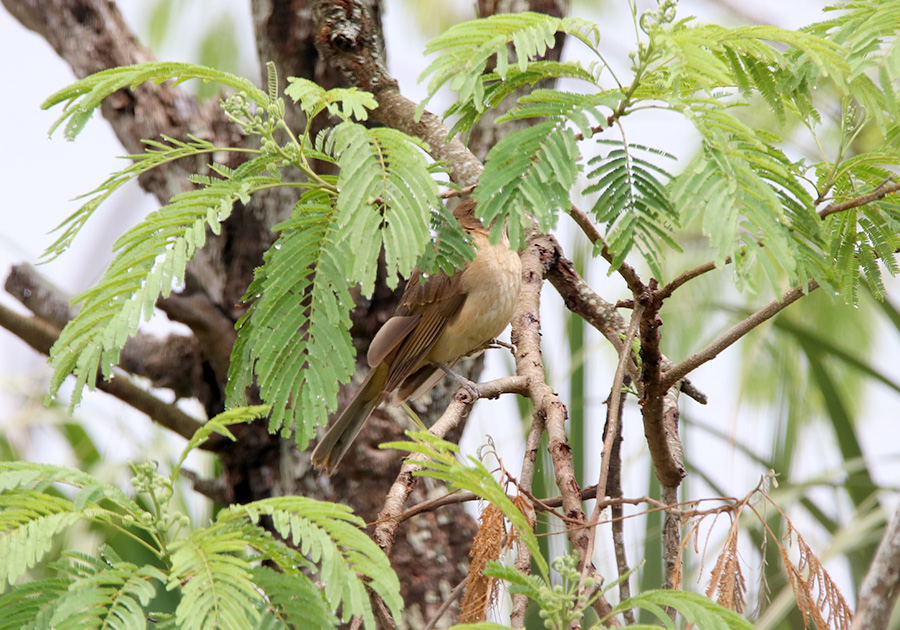
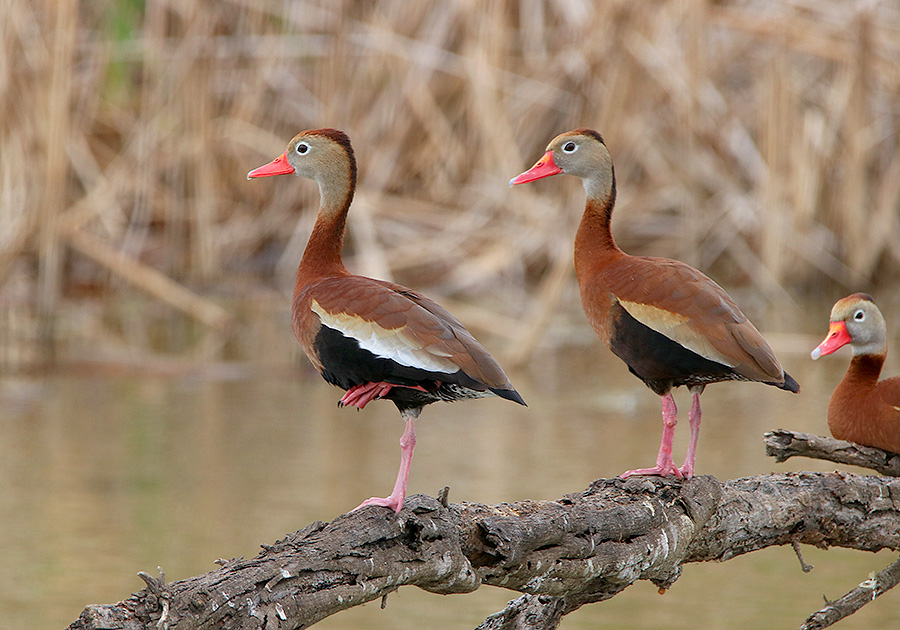
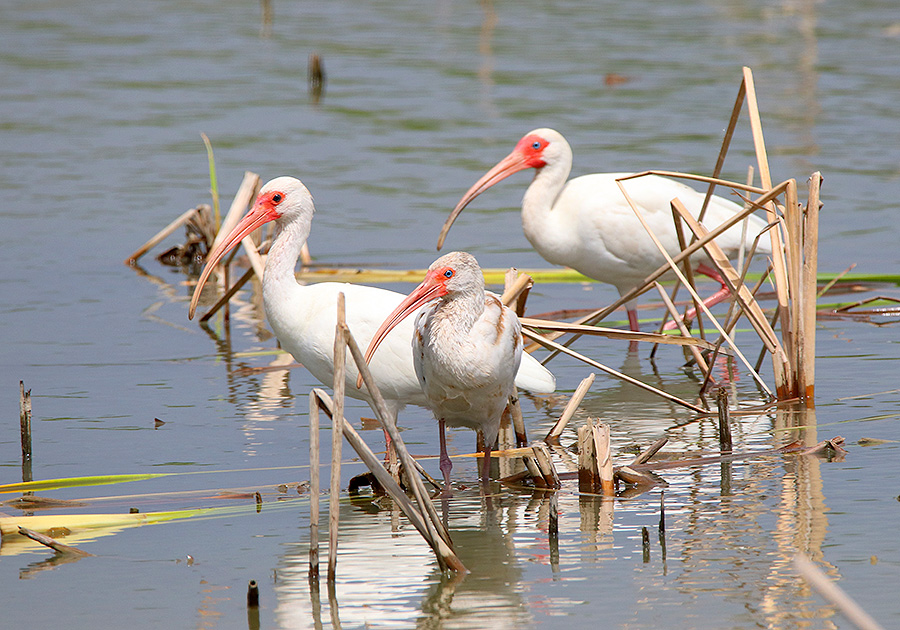
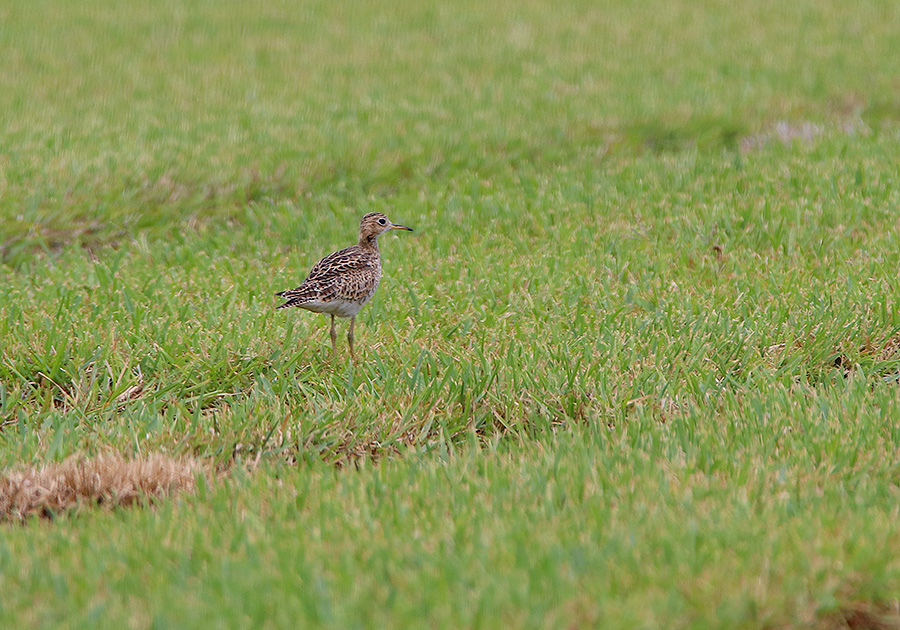
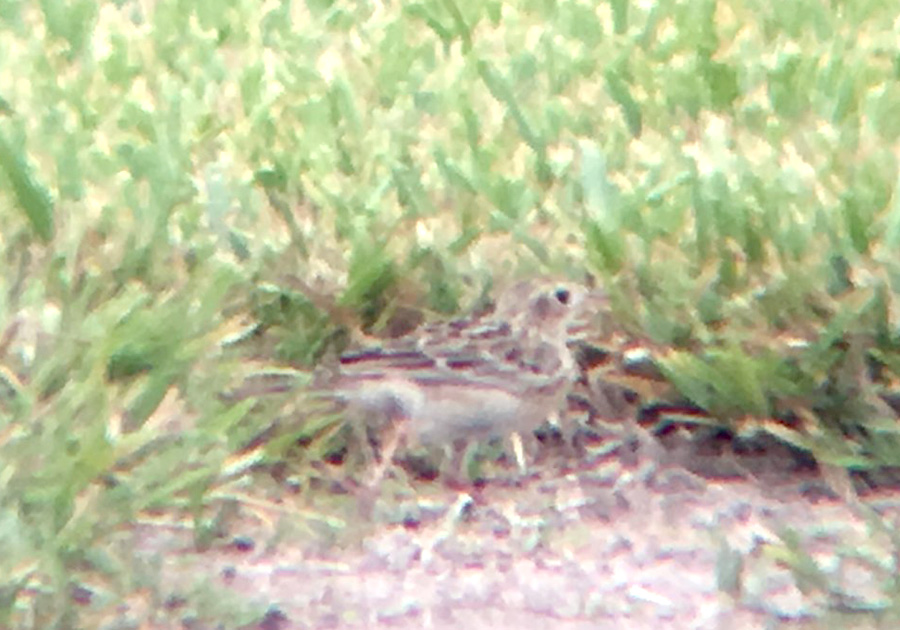
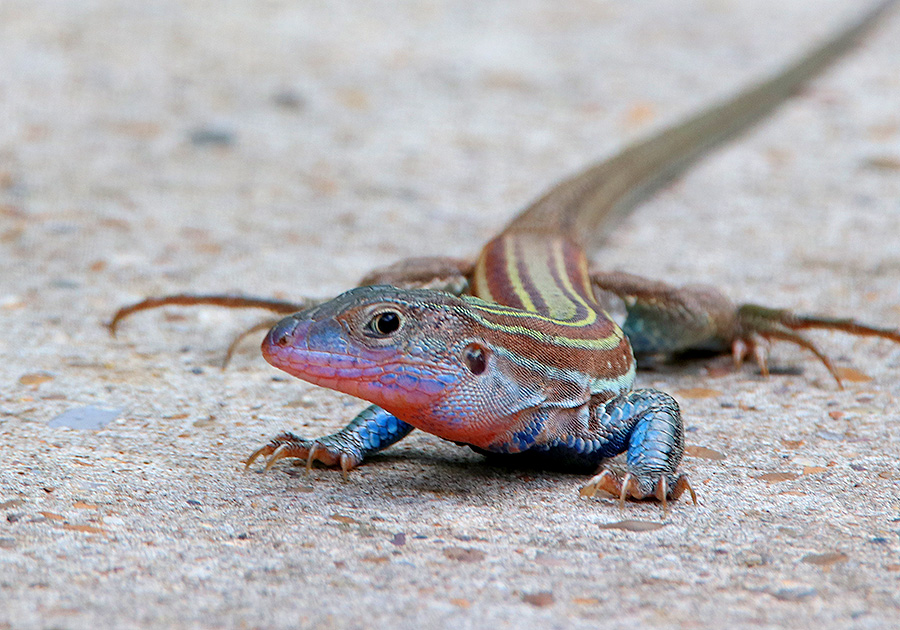
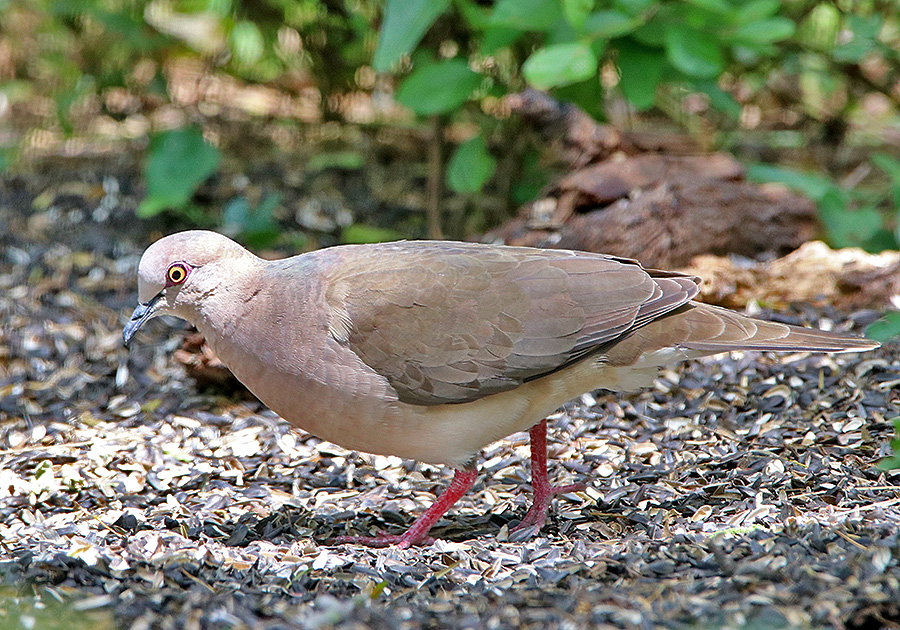
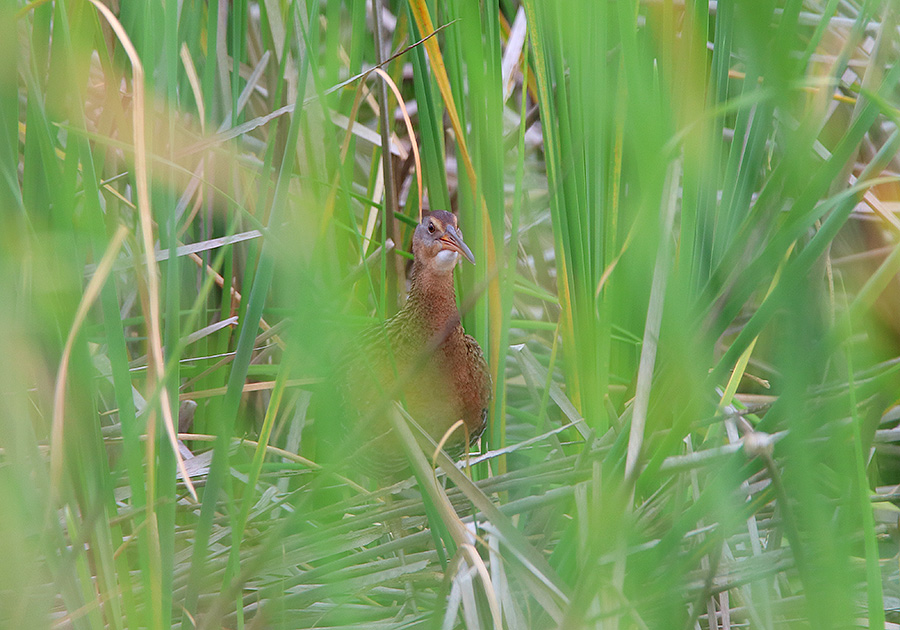
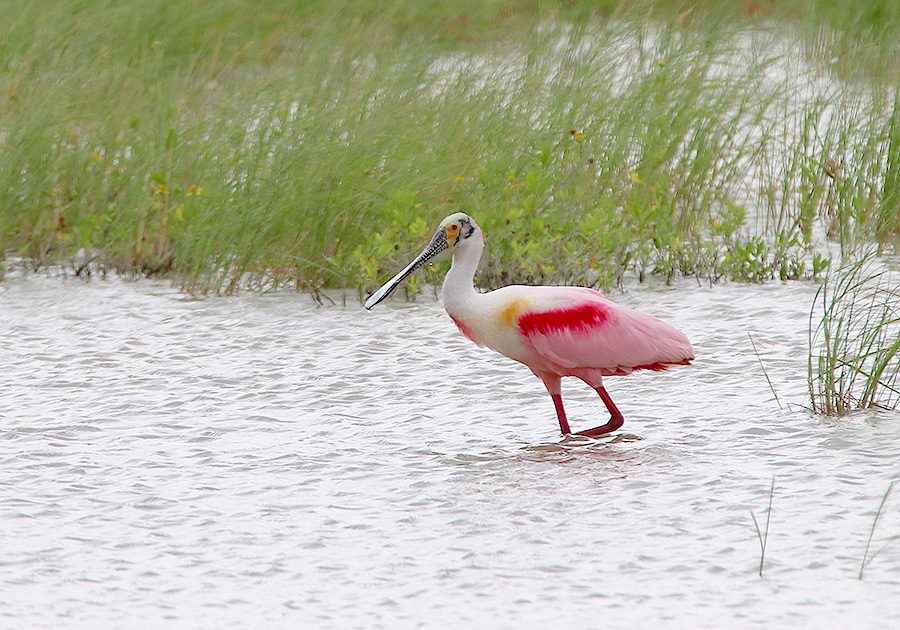
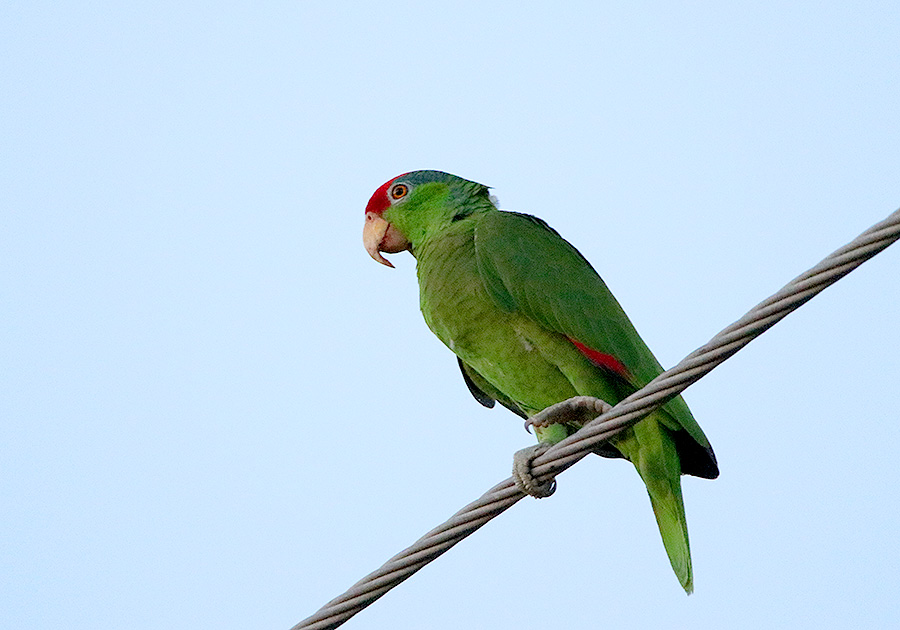
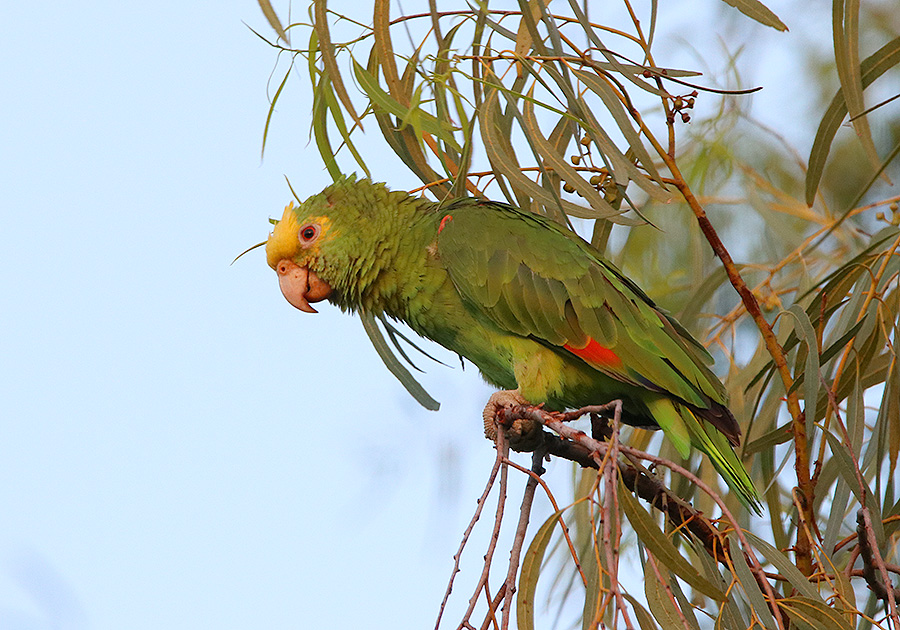
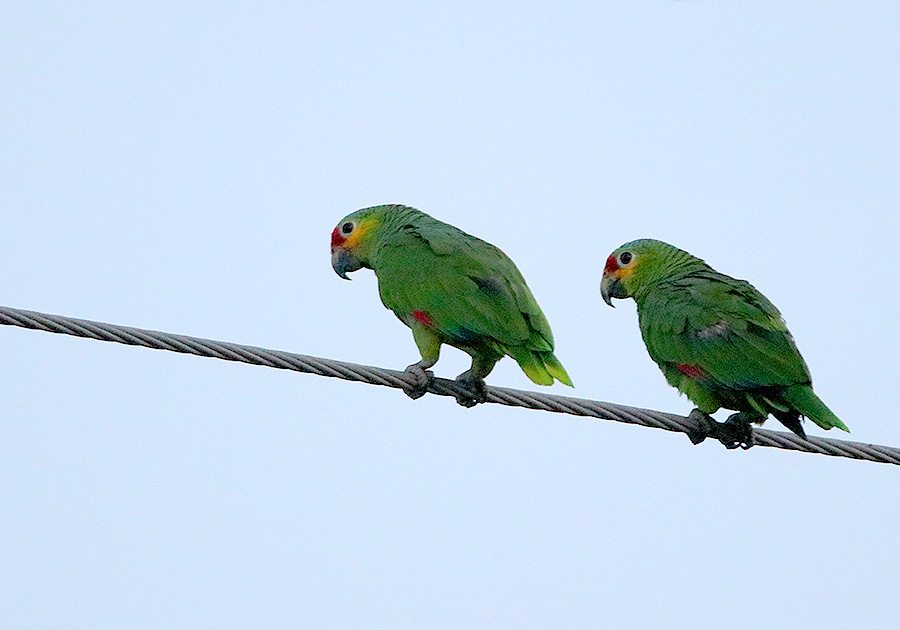
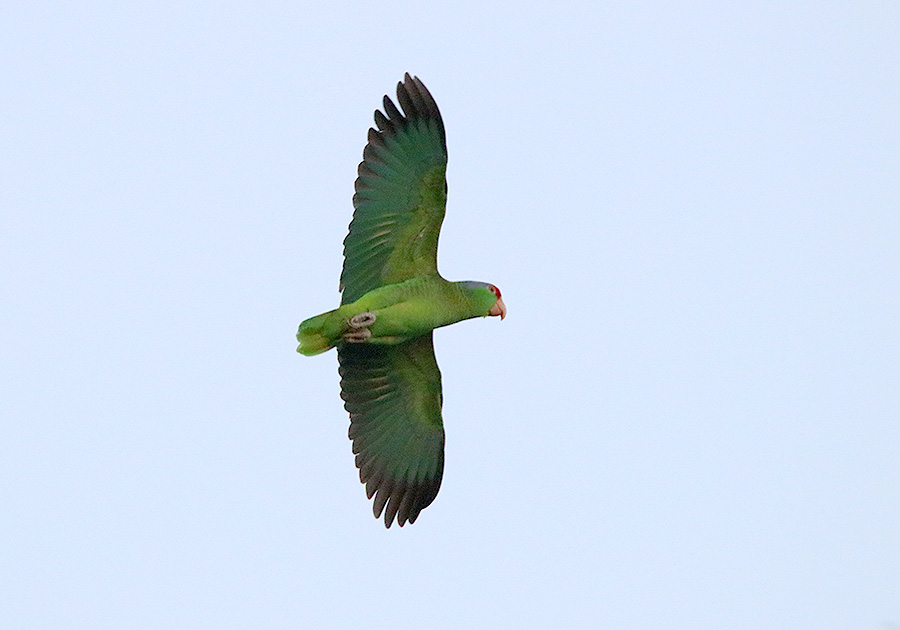

Post a Comment